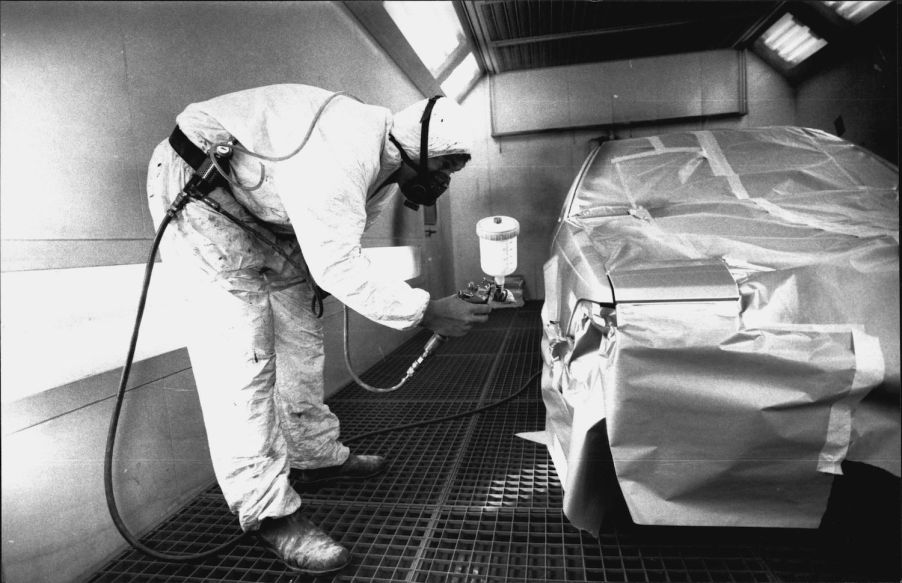
How To Paint A Car
Painting a car yourself is a time-intensive process that requires the right tools and a steady hand. But for some enthusiasts, spraying car paint is one of their favorite parts of the classic vehicle restoration process. Here’s a primer (pun intended) and all the supplies you’ll need and all the steps required to paint a car yourself.
Can I Paint A Car Myself?
Many automotive enthusiasts find painting their own cars a rewarding hobby. But know that mastering and practicing this craft can be very time-consuming. In addition, the cost of tools and supplies makes painting a car yourself as expensive as hiring a pro.

If you are just trying to address some sun peeling or other damage to your paint, consider some repair paint or some touch-up car paint instead of attempting a full re-paint. If you just want a new look, peel coats are an easily-reversible option.
If you are simply intrigued by painting your car yourself, and have both the time and resources to take on this hobby, you may find it a fulfilling aspect of your restoration.
What are the steps in painting a car?
First, you must sand all the paint and primer off your car and address any dents or scratches in the metal below. Painting requires spraying coats onto the metal, then sanding each down before adding another. Coats include primer, color/basecoat, and clear coat sealant on top.

Here are all the steps of painting a car:
- Old paint removal
- Prepping with body filler
- Spraying on primer
- Spraying on basecoat/color coat and clear coat
- Buffing
Here are some supplies you’ll need to buy before painting a car:
- Compressor
- Paint gun
- Respirator
- Guide coat
- Prepaint prep
- Countour body filler
- Epoxy primer
- Urethane primer/surfacer
- Basecoat/color coat
- Clearcoat
- DA Sander
- Sand Paper
- Sanding blogs
- Abrasive pads
Other supplies you might find useful
- Paint mixing cups
- Paint filters
- Tack rags
- Paint prep wipes
- Nitrile Gloves
- Filler Spreaders
How to paint a car

Prep can be the most time-intensive step of painting a car. This is because you must first sand every bit of old paint and primer off. Once you’re down to the metal, you treat any dents or scratches with a body filler product such as Bondo and sand again. Only when the surface is perfect, do you begin to paint.
The painting step includes spraying a primer, then a base coat/color coat, then finally a clear coat. After each coat dries, you’ll need to sand the results smooth before moving on to the next coat. Getting the results you want may take multiple layers of the color coat and will certainly require a few layers of the clear coat.
Finally, you will buff the finished panel until it shines. Depending on your workspace, you can paint an entire vehicle at the same time, or you can tackle each body panel individually.
Want to see how to paint a car yourself? Watch the experts at Eastwood show you how to paint a car in the video below:



